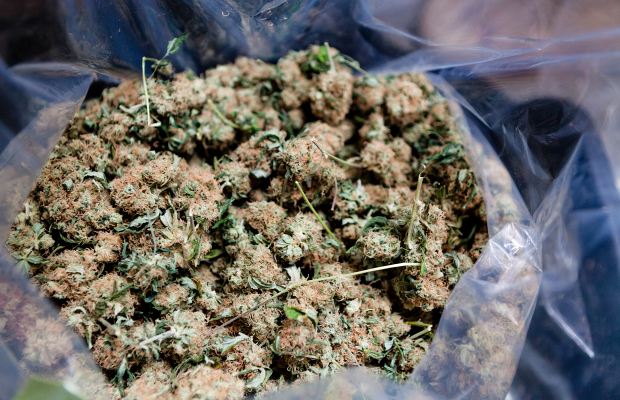
Cannabis
The Many Appellations of Marijuana Country
The concept of “terroir” is central to wine making — and branding. Now California cannabis, already a brand in the illusory sense, is making moves to secure its claim to fame and prevent imitators.
If you are a careless consumer committing the cardinal sin of ignorance — uttering nonsense phrases like, “All wine is the same,” — find a northern Californian. He or she will explain the actual order of things and send you on your way on the proper course.
Forget simple delineations like red and white; wines made from identical grapes grown on different sides of the same hill can smell, taste and make you feel different. This isn’t smugness, this is called “living.”
But wine is a secondary pursuit. California’s marijuana harvest is worth more than its haul of wine grapes. Advocates of cannabis have long resisted comparisons to alcohol — marijuana is safer than booze, they say, and nobody ever heard of medicinal whiskey — but they attract the same level of conscientious consumer. That is, annoying know-it-alls who can detect hints of lavender, fuel-oil and coffee in marijuana — then tell you, with accuracy, where it was grown.
And if packs of Marlboro marijuana cigarettes are ever sold at 7-Elevens (and they almost certainly will be) mass-market marijuana will be preceded by high-end cannabis marketed and sold under tightly-controlled and regulated regional appellations. Just like wine.
Anticipating this, a group of cannabis cultivators and aficionados in Mendocino County have been busy smelling, tasting and smoking marijuana grown on different hillsides in different climates throughout the region—and divvying up a map of the county into distinct marijuana appellations, just like nearby winemakers do.
This is now drawing national attention: Justin Calvino, a marijuana grower, and one of the chief organizers of the Mendocino Appellation Project, recently took the Wall Street Journal on a Mendocino county weed tour.
By now, even casual cannabis consumers accept that various strains of marijuana will smell, taste, and act upon the body and mind in different ways. Even nonsmokers may be able to recognize the words “indica” and “sativa” and identify one as an “upper” and the other as a “downer.” That knowledge base is just as limited as divvying up wine into “red” and “white.”
But just as important as what strain you grow is where you grow it: the concept of “terroir,” central to wine, is being applied to marijuana.
Cannabis grown in the fog belt near the rocky Lost Coast, Calvino explained to the Journal, will have hints of moss and salt air — it’ll smell like its home. Another strain from another valley, uniquely suited to the particular growing season in that microclimate, tastes like “lavender and gas,” grower Brett Canady told the Journal.
Part of the push for hyper-localized marijuana definitions is economic. When recreational marijuana becomes available over the counter in California, small farmers want to make sure they have a cut of the market.
Marijuana appellations is swell marketing, and has a state sponsor: The local state senator is behind a proposed update to California’s nascent marijuana industry regulations that would put strict controls on who can and can’t use cannabis bywords like “Humboldt” and “Mendocino.”
But are these unique flavor profiles unique to “the Emerald Triangle” — the remote, rural and forested hillsides where cannabis cultivation flourished in no small part because it was far away from law enforcement?
Master grower Ed Rosenthal isn’t so sure — he believes the hot, flat and dry Central Valley (where much of the nation’s supermarket produce is grown) is better-suited to the cannabis plant than rocky hidden valleys in Mendocino County.
Flash-forward five years. I have two joints. One’s from 7-Eleven, the other is from a cut of Humboldt Royal Kush. Will you be able to tell the difference — and which one will you want?
TELL US, can you tell the origin of your cannabis by taste and smell?






















